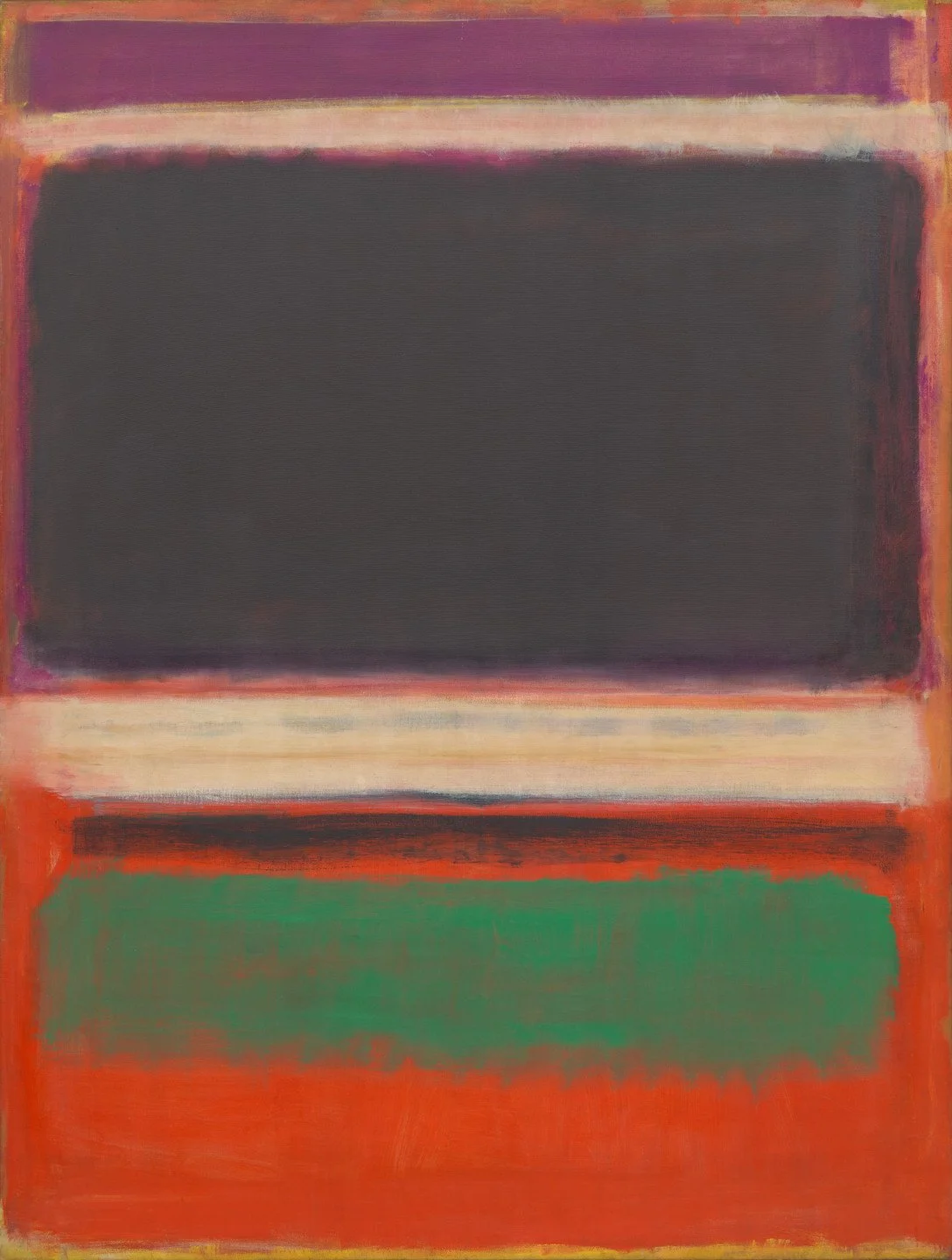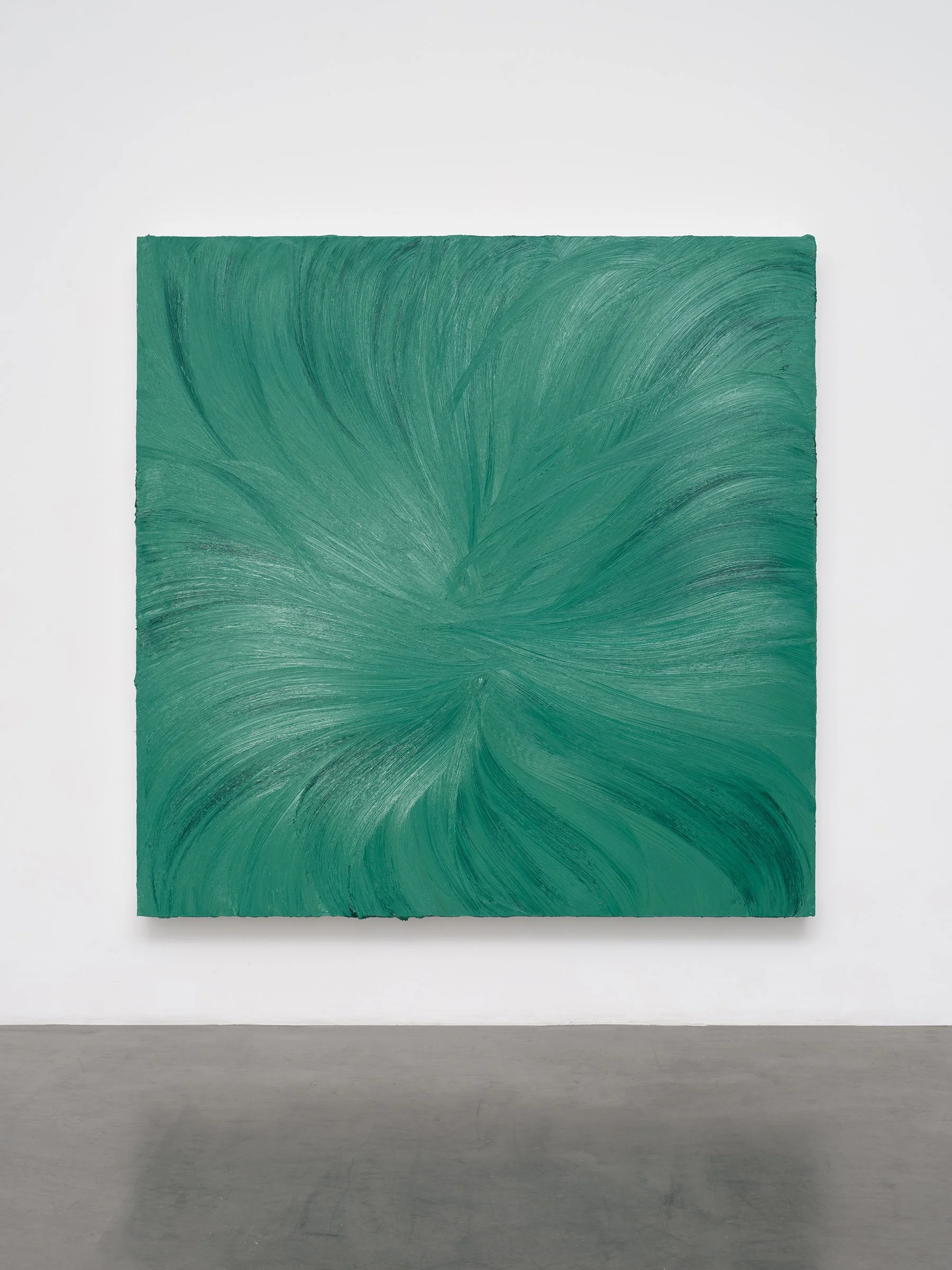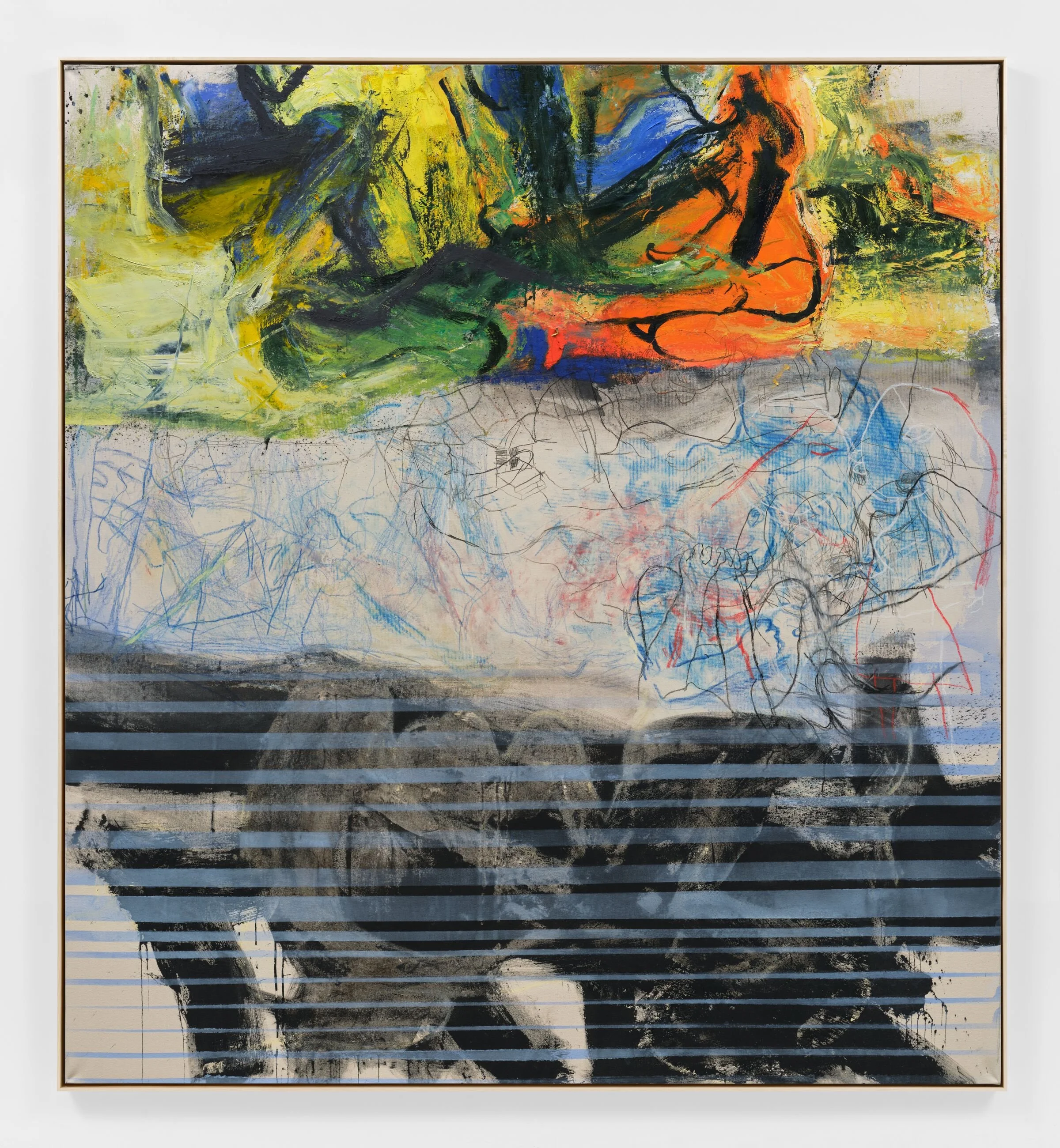Mark Rothko
“Collection 1940s–1970s”
New York ,11 West 53 Street
No. 3/No. 13 is an early example of a compositional structure that Rothko would continue to explore for more than two decades. Narrowly separated blocks of color hover against a colored ground. Their edges are soft and irregular, so that when Rothko used closely related tones the blocks sometimes seem barely to emerge from the ground. The green bar in No. 3/No. 13, on the other hand, appears to vibrate against the orange around it, creating an optical flicker. In fact, the canvas is full of gentle movement, as blocks emerge and recede and surfaces seem to breathe. Just as the edges tend to fade and blur, the colors are never completely flat, and the faint unevenness in their intensity reveals the artist’s exploration of the technique of scumbling: by planting bold colors on top of a haze of translucent layers of paint, he created ambiguity, a shifting between solidity and impalpable depth.
Installation view of the exhibition "Focus: Ad Reinhardt and Mark Rothko"
The sense of boundlessness in Rothko’s paintings has been related to the aesthetics of the sublime, an implicit or explicit concern of a number of his fellow painters in the New York School. The remarkable color in his paintings was for him only a means to a larger end: “I’m interested only in expressing basic human emotions—tragedy, ecstasy, doom,” he said. “If you...are moved only by...color relationships, then you miss the point.”







